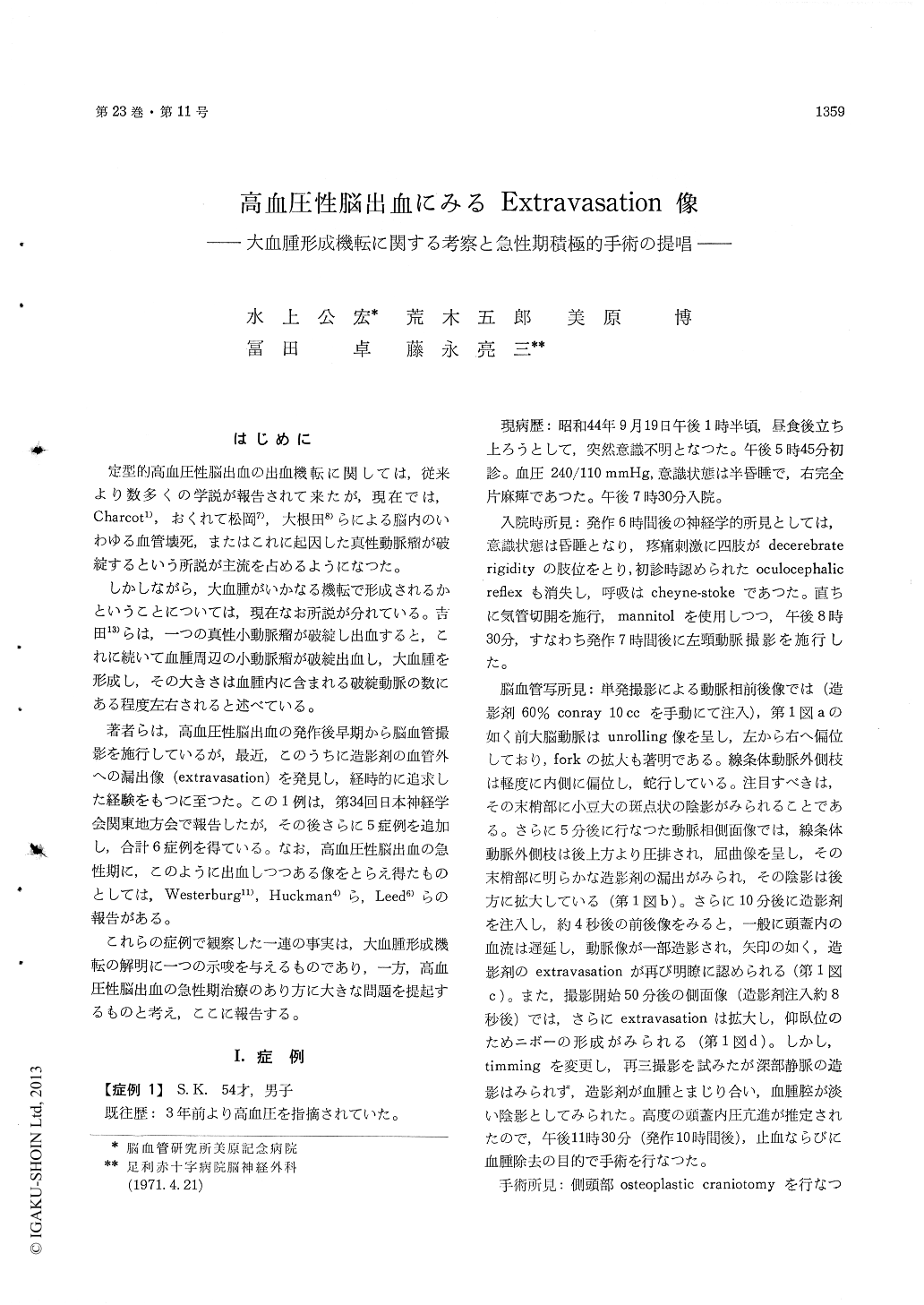Japanese
English
- 有料閲覧
- Abstract 文献概要
- 1ページ目 Look Inside
はじめに
定型的高血圧性脳出血の出血機転に関しては,従来より数多くの学説が報告されて来たが,現在では,Charcot1),おくれて松岡7),大根田8)らによる脳内のいわゆる血管壊死,またはこれに起因した真性動脈瘤が破綻するという所説が主流を占めるようになつた。
しかしながら,大血腫がいかなる機転で形成されるかということについては,現在なお所説が分れている。吉田13)らは,一つの真性小動脈瘤が破綻し出血すると,これに続いて血腫周辺の小動脈瘤が破綻出血し,大血腫を形成し,その大きさは血腫内に含まれる破綻動脈の数にある程度左右されると述べている。
1. We have reported the extravasation of the contrast media from the lenticulostriate artery in 6 cases of hypertensive intracerebral hemorrhage. The carotid angiography was performed in every cases at an early stage of the disease.
2. The angiographic extravasation might be rather frequently found than expected if angio-graphy was performed at an early storage in serious cases.
3. It can be concluded that in typical putaminal hemorrhage bleeding results from rupture of one of the lenticulostriate arteries. The hemorrhage extends into the direction of the least resitance in the lateral region of the putamen disseting the bundle of nerve fibers.
4. In the serious cases, which typically run a fatal course within 24 hours, bleeding assumes to be continue over several hours from a single rup-tured artery.
5. Surgical removal of hematoma was performed in 3 of 6 cases but unfortunately all three patients expired.
6. The clinical symptoms, however, improved in one case and responed to verval stimuli soon after surgery but the patient deceased 4 days after operation due to acute renal failure.
7. This case suggests that surgical evacuation and cessation of the hemorrhage seems to be the most logical mode of therapy as Fisher states.
8. We would like to stress that the immediate surgery should be tried if a patient's consciousness deteriorates while he is under observation.

Copyright © 1971, Igaku-Shoin Ltd. All rights reserved.


